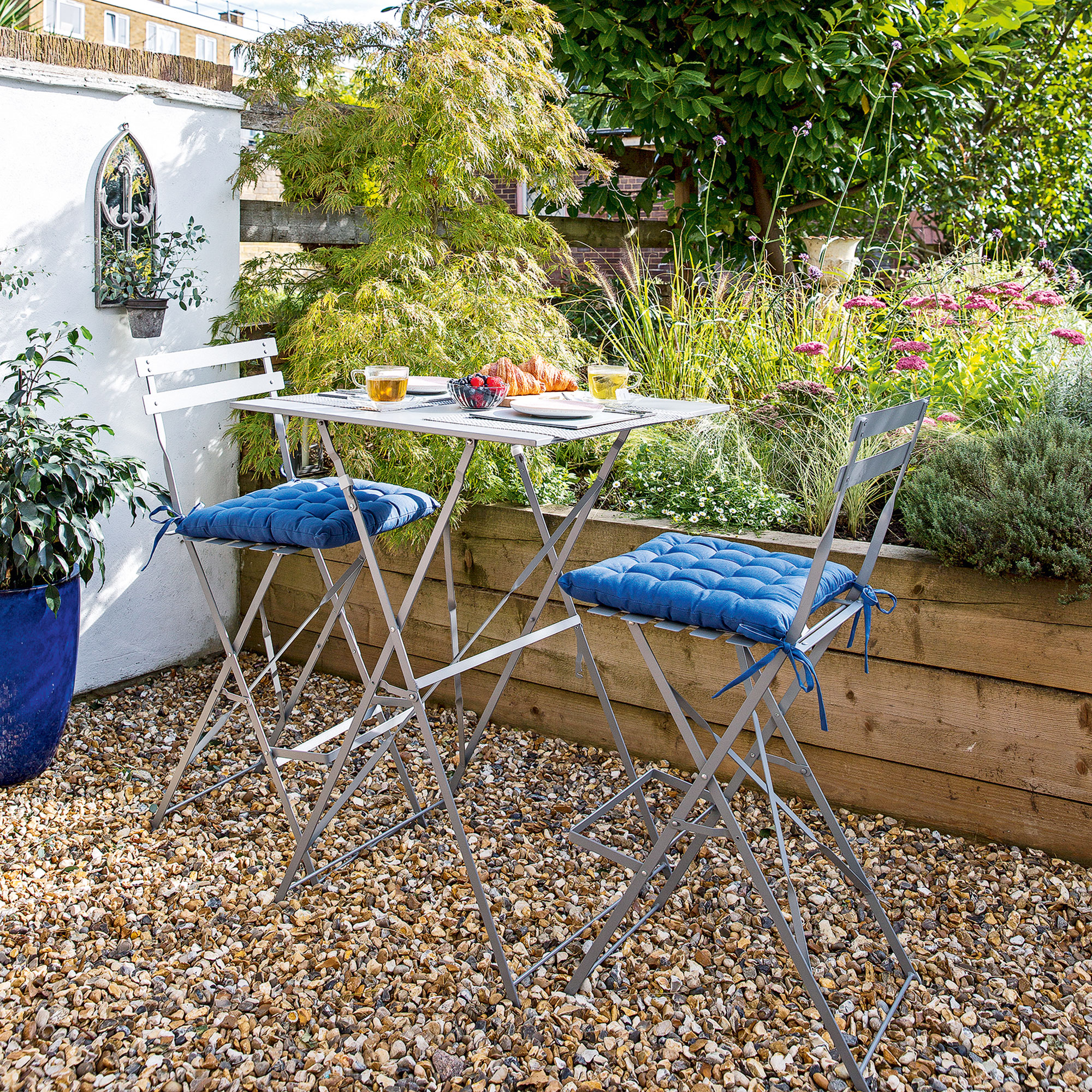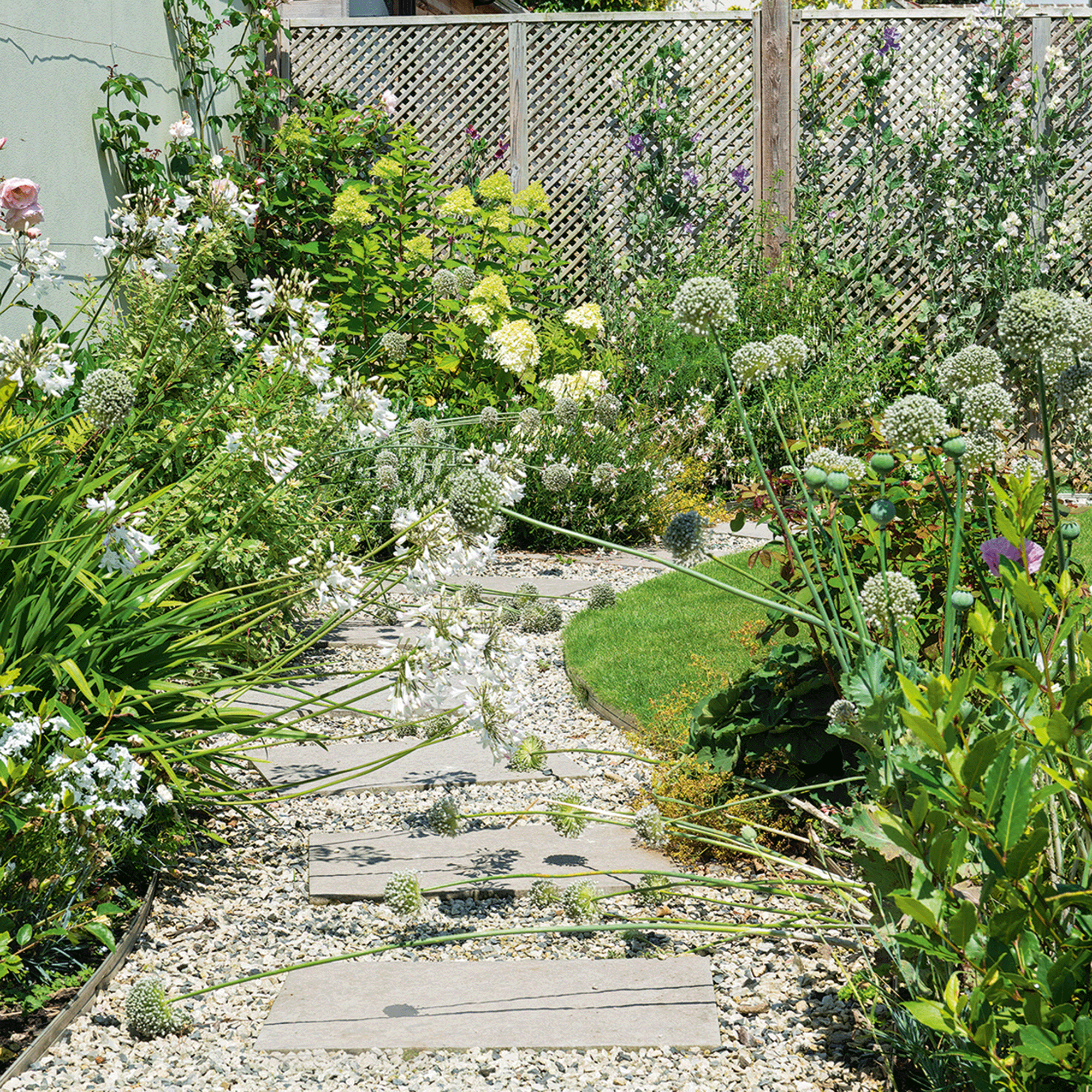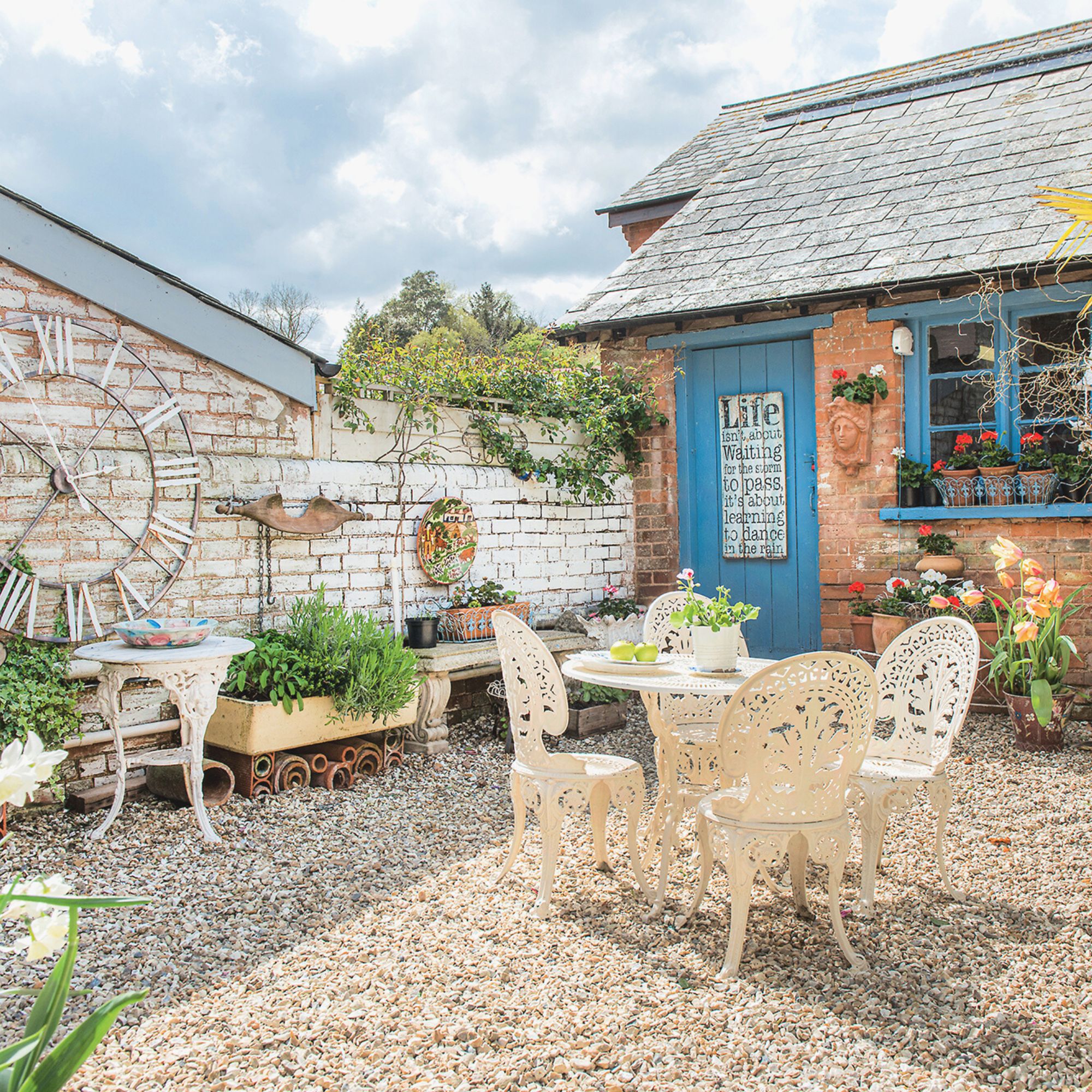How to clean garden stones – an easy step-by-step guide for gravel and decorative stones
Understanding how to clean garden stones isn’t a glamorous job, but it will boost your home’s kerb appeal no end

Lauren Bradbury

It's easy to focus on the big things when you’re tending to your garden. And while it’s important to show some love to your lawn and your flowerbeds, you should also know how to clean garden stones.
Yes, these stones need attention, no matter if you’ve brought a gravel garden idea to life or you’ve added decorative stones to your succulent garden. Over time, these stones can fall victim to dirt and discolouration, which will drastically impact how they look in your garden as a whole. Because of this, cleaning your garden stones is an essential gardening task.
In fact, Martin Beaumont, founder of Monty Miracle exterior cleaner, explained that cleaning your garden stones is a must-do for anyone who wants to keep their garden in tip-top condition.
'It’s important to clean gravel, as debris, dirt, algae and dust can quickly build up between the small stones and affect the overall appearance. However, gravel can be sensitive, so a gentle approach is needed,' he warned.
How to clean garden stones
‘Decorating an outdoor space with garden stones can elevate its appearance and make it look eye-catching,’ explains Chris Bonnett, founder of GardeningExpress.co.uk. ‘While they have mass aesthetic appeal, garden stones can become dirty over time if not cared for properly they can become an eye sore, making the space look uninviting.’ So, follow this step-by-step guide to clean your garden stones up a treat.
What you'll need
- An outdoor broom, like this affordable option from Amazon
- An outdoor dustpan and brush – this choice from Amazon is a great option
- Gardening gloves - we love these colourful options from B&Q
- A hose, like this choice from Screwfix (if you don't have one already!)
- Gravel patio cleaner for more stubborn stains, such as this Monty Miracle Patio Cleaner
- A cheap, old wheelbarrow – this is the most affordable option we spotted over on Amazon
Step-by-step guide
1. Sweep down the gravel surface

To begin with, you’ll need to get rid of any excess dirt, grime, or debris, e.g. items that can easily be pushed off of your gravel or garden stones. Martin says, 'Luckily, cleaning gravel is relatively easy – first, just gently brush the gravel and remove any debris such as leaves and twigs.'
You can do this with a large outdoor broom, or a small brush (like the one that comes as part of an indoor dustpan and brush set). However, the former will allow you to brush your gravel driveway or garden space without needing to bend over, so that may be your preferred tool – especially if you have a large area to clean.
Sign up to our newsletter for style inspiration, real homes, project and garden advice and shopping know-how
It's obviously best that you don't do this job with the same broom or brush that you use for inside cleaning. You may be brushing off some pretty unpleasant stuff (such as animal faeces or insects), and you’ll want to avoid bringing that inside your home!
2. Get rid of any greenery

After brushing away all of the excess material, the next step is to tackle any more stubborn outdoor material that might be living within your gravel or decorative stones.
Harry Bodell, garden expert at Price Your Job, told us, 'It’s important to remove weeds, leaves, cut grass and decomposing plant material before washing your gravel.' And there’s a very important reason for this. 'The stones can become discoloured if dead plant matter is allowed to remain on the gravel – and once wet, they can also add to the staining problem.'
Getting rid of weeds from gravel is pretty straightforward – tackle this and other plant material as you would unwanted greenery anywhere around your garden.
Pop on your gardening gloves and pick out any plant material with your hands, gently using a spade if necessary. You can use weed killer or weed spray as normal for any particularly stubborn clusters of weeds.
3. Clean with water and a suitable cleaning solution
'If the surface has only mild natural dust and dirt remaining, then water alone should suffice for cleaning,' Martin explained in regard to the next step for learning how to clean garden stones.
You can take a few different approaches to clean your gravel or decorative stones with water, but if you’re tackling a large area, there’s one method experts recommend.
'To clean medium to large areas of gravel, the easiest method is to use a garden hose – but on a low setting,' Harry said. The process is simple; aim your hose at every inch of your gravel, lingering over any dirtier parts, until any dust or dirt remaining are washed away.

However, to clean your garden stones as efficiently and as successfully as possible, you need to think about the type of stones you have. According to Tom, Director at Garden Stone, ‘Different types of aggregate demand tailored cleaning techniques.’
Not only that, but different types of stones also benefit from tailored cleaning products. So, you need to make sure that you’re using the right one. Below, you’ll find the most popular types of stones, and what you can use to clean them:
Gravel: Gravel is typically made from a variety of rock fragments, which makes it fairly easy to clean. Chris says, ‘Before cleaning gravel garden stones you need to remove any debris and soak them in water. For a deep clean, have a look through the cupboards for some white vinegar. They can be thoroughly cleaned with the solution without causing any damage to the stones.’
Limestone: A popular choice for those who want clean, white decorative stones, limestone can quickly become dirty. However, as limestone is a soft rock and easily damaged or discoloured, you need to be careful when cleaning them. ‘Be wary of using harsh chemicals to clean limestone garden stones as they can cause damage and discolouration. A small amount of washing-up liquid on a sponge will do the job without ruining the stones,’ explains Chris.
Marble: On the more expensive end of the spectrum, you have marble gravel, which is identifiable by the veining that runs through the stones. To keep them visible, Chris recommends, ‘sprinkling baking soda over the stones, leaving them to rest for 20 minutes and then cleaning them with a solution of white vinegar and distilled water. A thorough clean will give the stones a sleek finish to make the garden shine.’
4. Use this method for smaller areas

If you’re got a smaller area of decorative stones to clean – be it within a small water feature or a small garden path – you should still employ the first two steps above – but switch out the third step for this method.
Thankfully, Harry said, 'Small areas of decorative gravel will be quicker and easier to clean than large expanses, such as on a driveway.' So how should you go about it?
'Small areas of gravel such as decorative areas in your garden can be cleaned by sifting the gravel through a metal mesh to get rid of dirt,' Harry explained. 'Alternatively, you can drill holes in an old wheelbarrow, put the gravel in and rinse with a garden hose while agitating the gravel.'
If you don’t have a wheelbarrow that you’re willing to put holes in, you could put the stones into any sieve-like container you do have to hand, and gently rinse your gravel in that.
FAQs
How do I make my garden stones white again?
If your garden stones have become discoloured, washing them with water may be enough to wash up the grime and debris that’s stuck to them over the years.
However, if they’re particularly dirt, you may need to add some kind of cleaning agent into the mix.
For most stones, a mixture of white vinegar and water or washing-up liquid and water should make them white again. You can also use baking soda, and this is particularly effective in cleaning marble stones.
How do you clean a gravel driveway?
Cleaning a gravel driveway doesn’t require a special or different method to the one above. In fact, Martin explains, 'The same approach is fine; simply use a brush to first get rid of unwanted loose debris, and rinse with water. Or, apply the liquid cleaner if you have stubborn stains, leave for 10 minutes, and then rinse with water.'
If you do have a large area of gravel at home, such as a driveway, he also suggests that one of the best ways to keep it in tip-top shape is to look after it consistently, so that it never gets too dirty that it becomes difficult to return to its original clean state.
'The important thing with a larger area is maintenance,' Martin said. 'Rake and weed your drive regularly, and use a cleaner a couple of times a year.
'And every now and then, invest in a new bag of gravel to top it up, and keep it looking level.' In fact, this is good practice with all larger areas of gravel, as stones inevitably get dislodged throughout the years.

Can you power wash gravel?
Though it may sound like a quick and easy option for planning how to clean gravel, power washing this kind of surface is a huge no-no if you want to maintain its quality. In fact, it's one of many items you should never power wash.
'Aggressive jet-washing will not only destroy sealants between tiles, bricks and patio stones, but it can remove the surface layer of stone and gravel, leaving it exposed and vulnerable to further damage and decay,' Martin explained.
And that’s not all – power washing gravel can even be hazardous, Harry explained.
'Using a high-pressure washer to clean gravel will send stones flying in all directions. This has the potential to hurt someone or cause damage to your home, car or outdoor furniture, never mind any pets or humans! Instead, just use a garden hose on the appropriate pressure setting, as suggested.'
In fact, this is the main reason why it’s important to use your hose on a low setting when cleaning gravel, to avoid any damage to the material, and possibly yourself.
Follow this method to clean your decorative stones, and your garden will thank you for it.

Amy Hunt is an experienced digital journalist and editor, now working in a freelance capacity specialising in homes and interiors, wellness, travel and careers. She was previously Lifestyle Editor at woman&home, overseeing the homes, books and features sections of the website. Having worked in the industry for over eight years, she has contributed to a range of publications including Ideal Home, Livingetc, T3,Goodto, Woman, Woman’s Own, and Red magazine.
- Lauren BradburyContent Editor (House Manual)